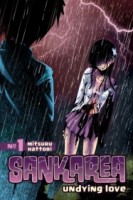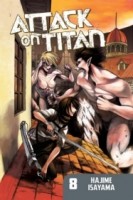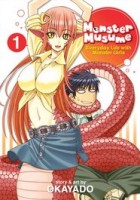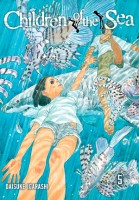The end of October approaches as does Hallowe’en, so I thought it would be appropriate to feature a horror manga for this month’s giveaway. As such, this month you all will have a chance to win a copy of the first volume of Mitsuru Hattori’s Sankarea: Undying Love as published by Kodansha Comics in English, the third volume of which was just released this week. Granted, Sankarea is really more of a strange romantic comedy than straight up horror…but it has zombies, so I’m going to count it! As always, the giveaway is open worldwide.
Over the last few years, zombies have become incredibly popular in the United States. They’ve become so popular in fact, that I’ve actually become rather bored with them. (Planning for the zombie apocalypse with family and friends can still be an entertaining thought experiment, though.) With more and more zombie stories out there, it becomes more and more important that creators find a way to distinguish their work in some way. In the case of Sankarea, Hattori has not only created a rather odd sort of hydrangea zombie, but he has also made her the primary romantic interest of the series, too. It’s an unusual take on the zombie genre, and I can certainly appreciate him trying to doing something a little offbeat and different.
So, you may be wondering, how can you win a copy of Sankarea: Undying Love, Volume 1?
1) In the comments below, tell me about any run-ins you’ve had with zombies in manga. (Never encountered a manga zombie? Just mention that.)
2) For a second entry, answer the following question: Do you prefer slow-moving zombies or fast-moving zombies in your fiction?
3) If you’re on Twitter, you can earn a bonus entry by tweeting about the contest. Make sure to include a link to this post and @PhoenixTerran (that’s me).
That’s all there is to it! Each person can earn up to three entries for this giveaway and has one week to submit comments. Entries may also be sent via e-mail to phoenixterran(at)gmail(dot)com and I will post them in your name. The giveaway winner will be randomly selected and announced on November 6, 2013. Good luck to you all!
VERY IMPORTANT: Include some way that I can contact you. This can be an e-mail address, a link to your website, Twitter username, or whatever. If I can’t figure out how to get a hold of you and you win, I’ll just draw another name.
Contest winner announced—Manga Giveaway: Sankarea Giveaway Winner











